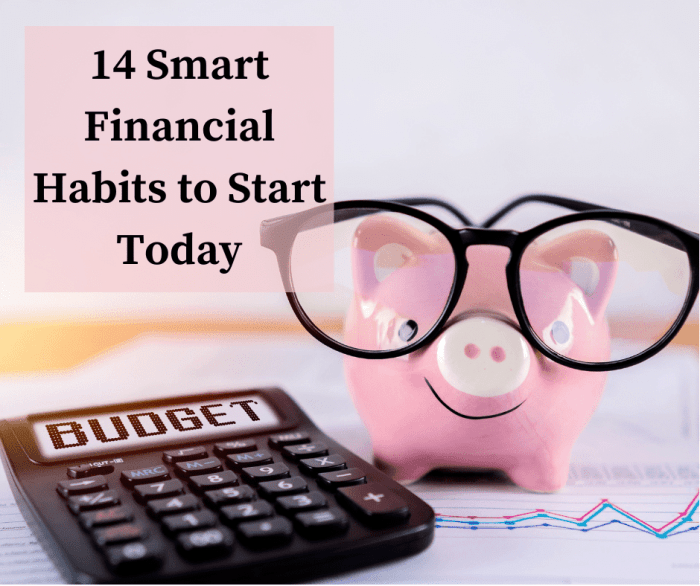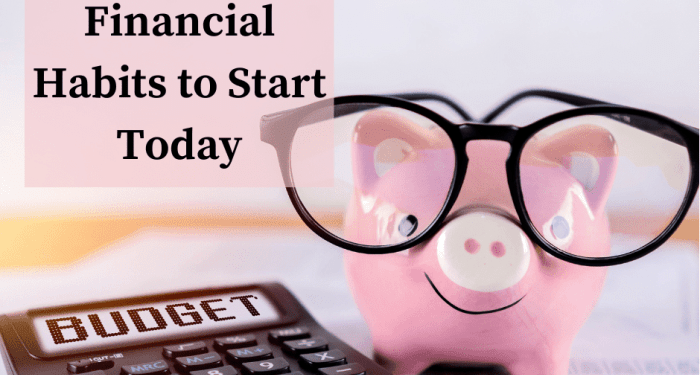Embark on a journey towards financial wellness with Smart Habits That Shape a Sustainable Financial Lifestyle. This guide delves into key practices that can transform your financial habits, paving the way for a secure and prosperous future.
Learn about effective budgeting, building emergency funds, wise investing, debt management, and sustainable spending to ensure a strong financial foundation.
Smart Habits for Budgeting
Effective budgeting is crucial for maintaining a sustainable financial lifestyle. Here are some key habits that can help you budget effectively:
Tracking Expenses
Tracking your expenses is essential in shaping a sustainable financial lifestyle. By keeping a record of where your money is going, you can identify areas where you may be overspending and make necessary adjustments to stay within your budget.
Setting Realistic Goals
Setting realistic financial goals is another smart habit for budgeting. Whether you're saving for a big purchase or trying to pay off debt, having clear goals can help you stay motivated and focused on your financial objectives.
Creating a Budget Plan
Creating a budget plan is key to effective budgeting. This involves outlining your income, expenses, and savings goals to ensure that you are living within your means and working towards financial stability.
Automating Savings
Automating your savings can help you consistently set aside money for your financial goals. By automating your savings, you can ensure that a portion of your income goes towards savings before you have a chance to spend it.
Reviewing and Adjusting
Regularly reviewing your budget and expenses is important for staying on track with your financial goals. By evaluating your spending habits and making adjustments as needed, you can ensure that you are making progress towards financial stability.
Building an Emergency Fund

Having an emergency fund is a crucial aspect of financial planning as it provides a safety net for unexpected expenses or financial hardships that may arise.
The Importance of an Emergency Fund
An emergency fund acts as a buffer against unforeseen circumstances such as medical emergencies, car repairs, or sudden job loss. It helps avoid falling into debt or having to liquidate assets at a loss.
Strategies for Saving and Maintaining an Emergency Fund
- Set a specific savings goal: Determine how much you want to save for your emergency fund, typically 3 to 6 months' worth of living expenses.
- Automate your savings: Set up automatic transfers from your checking account to your emergency fund to ensure consistency in saving.
- Cut unnecessary expenses: Review your budget and identify areas where you can reduce spending to allocate more towards your emergency fund.
- Use windfalls wisely: Direct unexpected income such as bonuses or tax refunds towards your emergency fund rather than splurging on non-essential items.
Preventing Financial Setbacks and Reducing Debt
By having an adequately funded emergency fund, you can weather financial storms without derailing your long-term financial goals. It helps you avoid high-interest debt from credit cards or loans taken out in times of crisis.
Investing Wisely
Investing plays a crucial role in shaping a sustainable financial lifestyle by helping individuals build wealth over the long term. By strategically investing money, individuals can grow their assets and secure their financial future.
Different Investment Options
- Stocks:Stocks represent ownership in a company and offer the potential for high returns. However, they also come with a higher level of risk due to market fluctuations.
- Bonds:Bonds are debt securities issued by governments or corporations with the promise of regular interest payments. They are generally considered lower risk compared to stocks but offer lower returns.
- Real Estate:Investing in real estate involves purchasing properties to generate rental income or capital appreciation. Real estate can provide a steady income stream and potential for long-term growth, but it requires active management and carries risks related to market changes.
Diversification in Investment
Diversification is the practice of spreading investments across different asset classes to minimize risk and optimize returns. By diversifying a portfolio, investors can reduce the impact of volatility in any single investment and enhance overall stability. It is essential to have a well-diversified investment portfolio to ensure long-term financial sustainability.
Debt Management Strategies
Debt management is a crucial aspect of maintaining a sustainable financial lifestyle. Effective strategies can help individuals reduce debt and achieve financial stability.
Snowball and Avalanche Methods for Debt Repayment
- The snowball method involves paying off the smallest debt first while making minimum payments on larger debts. Once the smallest debt is cleared, the amount previously used for that debt is rolled into paying off the next smallest debt.
This method provides a psychological boost as debts are eliminated one by one.
- The avalanche method, on the other hand, focuses on paying off debts with the highest interest rates first. By tackling high-interest debts initially, individuals can save money on interest payments in the long run. This method may result in faster overall debt repayment compared to the snowball method.
Consolidating Debt for Financial Stability
Consolidating debt involves combining multiple debts into a single loan with a lower interest rate. This can simplify debt repayment by having only one monthly payment to manage. Additionally, consolidating debt may lower the overall interest paid, making it easier to pay off debt faster and achieve financial stability.
Sustainable Spending Habits

Developing sustainable spending habits is crucial in maintaining a healthy financial lifestyle. By being mindful of how we spend our money, we can align our expenses with our financial goals and ensure long-term stability.
Cultivating Mindful Spending Habits
One way to cultivate mindful spending habits is to create a budget and track your expenses. By knowing exactly where your money is going, you can make informed decisions about your spending. Additionally, avoid impulse purchases by practicing delayed gratification.
Give yourself time to consider whether a purchase is necessary or just a fleeting desire.
Examples of Sustainable Spending Practices
- Avoiding unnecessary expenses by distinguishing between wants and needs.
- Comparing prices and looking for discounts before making a purchase.
- Setting spending limits for different categories to prevent overspending.
Impact of Impulsive Buying
Impulsive buying can have a detrimental effect on your financial well-being by leading to unnecessary debt and hindering your ability to save and invest. To avoid impulsive buying, consider implementing a 24-hour rule where you wait a day before making a non-essential purchase.
This gives you time to assess whether the purchase is truly worth it.
Closing Notes
In conclusion, adopting smart habits in your financial life is the key to long-term stability and success. By following the strategies Artikeld in this guide, you can shape a sustainable financial lifestyle that secures your financial well-being for years to come.
Common Queries
How can tracking expenses help in shaping a sustainable financial lifestyle?
Tracking expenses allows you to identify spending patterns, prioritize essential expenses, and make informed decisions to achieve financial goals.
What are the benefits of having an emergency fund in financial planning?
An emergency fund provides a financial safety net, helps cover unexpected expenses, prevents debt accumulation, and ensures financial stability during challenging times.
How does diversification play a role in a sustainable financial portfolio?
Diversification involves spreading investments across different asset classes to reduce risk and enhance long-term returns, thereby contributing to a sustainable financial portfolio.










